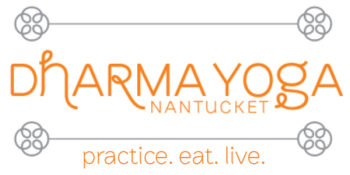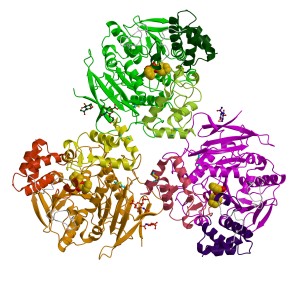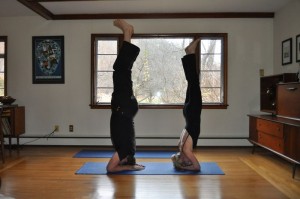
Happy Summer! July marks 2 important occasions: The official start of summer and the one year anniversary of AHUM. After a brief hiatus, I am happy to to be sharing some thoughts on all things yoga. If you are new to the blog, Welcome! There is a great archive of past posting to read. If you are a current subscriber welcome back! Here we will PRACTICE. EAT. and LIVE.
Thank you for joining me.
Namaste
(“The gesture Namaste represents the belief that there is a divine spark within each of us that is located in the heart chakra. the gesture is an acknowledgement of the soul in one by the soul in another. “Nama” means bow, “as” means I and “te” means you. Therefore, Namaste literally means “bow me you” or I bow to you.” Aadil Palkhivala)
I am a HUGE fan of juicing. Especially during these hot and humid days, it is a great way to hydrate the body. I was recently asked about the sugar content in fruits and the effect that the sugar may have on the body. Great Question. ( although I do find it kind of funny that someone could eat a lunch of a coke, a burger and fries and no one would blink an eye, but have a fruit juice and something must be awry 🙂
First and foremost when it comes to juice and food it has always been my firm belief that you have to listen to your body.
Everyone’s body is different and it is important to ask yourself the question “How do I feel” after you eat or drink something.
Juicing is and always has been an excellent way to get a concentrated source of nutrients, both vitamins and minerals, into the body in an absorbable form.
Since your body absorbs and digests the nutrients faster, it has more down time for repair. When your body is not busy digesting food it is on the lookout for ways to heal itself.
When you juice, you are feeding your body and repairing it at the same time. Fruit juices in particular are known as “cleansers”.
Yes, when we juice sweet fruits, we are eliminating the key component in slowing down the absorption of the simple sugar fructose. This key component is the pulp, Pulp is an insoluble fiber that slows down the absorption of fructose in the gut by the body. The rule of thumb for what is an allowable amount of sugar to take in on a daily basis varies tremendously. The best answer I believe is the following:
“In petitioning for labeling changes regarding sugar, CSPI (Center for Science in the Public Interest), joined by dozens of leading health experts, also wants the FDA to set a maximum recommended daily intake (Daily Value) for added sugars of 10 teaspoons (40 grams) and require labels to disclose the percentage of the Daily Value a food provides.”There are many naturally occurring sugars such as sucrose which is a combination of glucose and fructose (or fruit sugar), lactose (from milk), maltose and galactose. You don’t want too many of the simple sugar glucose, but you can have a few more of the complex ones. If you digest too many simple sugars, your body gets swamped and the excess that is not used by your body gets stored as fat. Also useful to know is that sugars enters your cells using the same pathway as Vitamin C – so, too much sugar and your body does not absorb Vitamin C as well. However, you can eat or drink natural sugars in moderation – say up to 100 grams a day (like orange juice which contains quite a lot of fructose). ”
As a frame of reference, on average, a glass of fresh orange juice has about 30 grams of natural sugar, keeping you well below the amounts discussed above.
In a nutshell, processed sugar is to be avoided, natural sugar is fine in moderation.
In yoga, with food, and in our lives it is always about finding the balance.



 The food we choose to EAT is one of the most important decisions that we can make when it comes to maintaining our health. The more fresh fruits and vegetables that we can incorporate into our diet the healthier we will be. In fruits and vegetables there is a life giving element that exists: enzymes.
The food we choose to EAT is one of the most important decisions that we can make when it comes to maintaining our health. The more fresh fruits and vegetables that we can incorporate into our diet the healthier we will be. In fruits and vegetables there is a life giving element that exists: enzymes. Salamba Sirsasana or Headstand is known as the King of all Yoga Poses. The reasons are many. It affects every system of the body: the cardiovascular, lymph, endocrine, and digestive systems. It reverses aging, increases blood flow to the brain, regulates pituitary and pineal glands, enhances circulation and creates mental clarity and calm. It allows you to literally turn your world upside down to gain new insight by changing your perspective.
Salamba Sirsasana or Headstand is known as the King of all Yoga Poses. The reasons are many. It affects every system of the body: the cardiovascular, lymph, endocrine, and digestive systems. It reverses aging, increases blood flow to the brain, regulates pituitary and pineal glands, enhances circulation and creates mental clarity and calm. It allows you to literally turn your world upside down to gain new insight by changing your perspective. When I was in high school my mother gave me two wonderful little books of philosophy called Notes to Myself and How to Live in the World and Still Be Happy by Hugh Prather. I read them over and over again throughout my life, his simple words always seemed to make sense, to calm and reassure me. I carried the books with me until they were so dog eared and highlighted that they literally fell apart. Even now, so many years later, his words are ingrained in my memory. One of my favorite Hugh Prather quotes is: “LIVE your life as if everything you do will eventually be known.” Now that is a tall order.
When I was in high school my mother gave me two wonderful little books of philosophy called Notes to Myself and How to Live in the World and Still Be Happy by Hugh Prather. I read them over and over again throughout my life, his simple words always seemed to make sense, to calm and reassure me. I carried the books with me until they were so dog eared and highlighted that they literally fell apart. Even now, so many years later, his words are ingrained in my memory. One of my favorite Hugh Prather quotes is: “LIVE your life as if everything you do will eventually be known.” Now that is a tall order. Happy February. Happy Valentines Day.
Happy February. Happy Valentines Day.